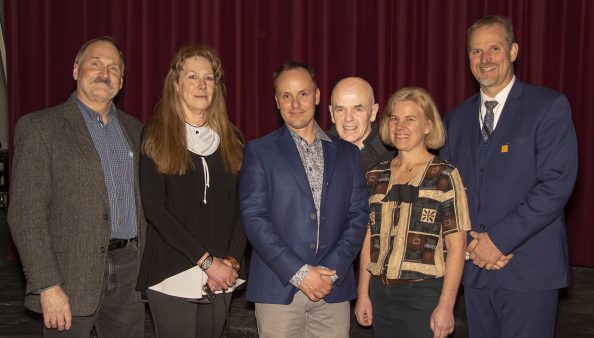 In 2017 and 2018, 2.5 million hectares of BC’s landscape burned due to wildfires, while several beetle infestations soared to new heights. What will the summer of 2019 bring and how do we adapt our forest practices to ensure forest resilience? Cue Michael Bragg (ABCFP Host Committee Chair) to kick off the first plenary session, introducing Paul Rasmussen (FLNRORD) the panel moderator.
In 2017 and 2018, 2.5 million hectares of BC’s landscape burned due to wildfires, while several beetle infestations soared to new heights. What will the summer of 2019 bring and how do we adapt our forest practices to ensure forest resilience? Cue Michael Bragg (ABCFP Host Committee Chair) to kick off the first plenary session, introducing Paul Rasmussen (FLNRORD) the panel moderator.
Dr. Paul Hessburg (University of Washington) spoke first of his work on how 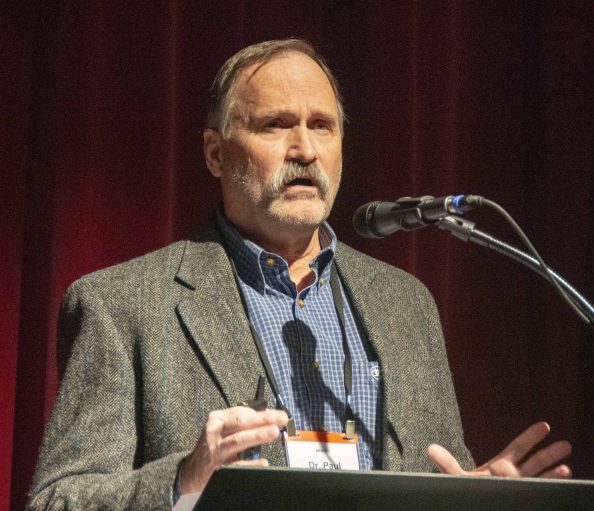 historical forest and fire management on Inland Pacific landscapes has transformed the area’s successional and disturbance dynamics over time (e.g., species, density life form patterns, etc.) and how those forests should best be evolved going forward. Key findings include the degree to which forest are spatially varied at multiple scales—which confers resilience to variability in climate and fire disturbance over time. Key is finding the elements that are outside the “wobble” or norm and then restoring the characteristics of resilience via planning and management at the landscape, regional, patch, and tree neighborhood levels.
historical forest and fire management on Inland Pacific landscapes has transformed the area’s successional and disturbance dynamics over time (e.g., species, density life form patterns, etc.) and how those forests should best be evolved going forward. Key findings include the degree to which forest are spatially varied at multiple scales—which confers resilience to variability in climate and fire disturbance over time. Key is finding the elements that are outside the “wobble” or norm and then restoring the characteristics of resilience via planning and management at the landscape, regional, patch, and tree neighborhood levels.
Entomologist Dr. Lorraine Maclauchlan (BC Ministry of Forests) spoke of the vast, severe and unprecedented disturbance in BC’s forests due to forest insects and the 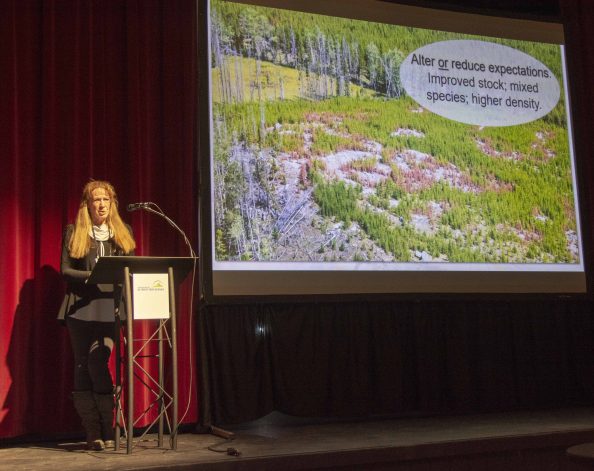 critical role forest health and resilience plays. Referencing examples of past and current insect outbreaks, Maclauchlan described an earth and forest that is out of balance with the norm, most critically at the soil level. Key is recording these changes over time so as to understand what they mean (e.g., the outbreak triggers), analysing tree and forest level susceptibility and resilience over time, and changing our expectations of both our mature forests and those young of age. According to Maclauchlan, novel approaches are required along with constant monitoring and adaptation.
critical role forest health and resilience plays. Referencing examples of past and current insect outbreaks, Maclauchlan described an earth and forest that is out of balance with the norm, most critically at the soil level. Key is recording these changes over time so as to understand what they mean (e.g., the outbreak triggers), analysing tree and forest level susceptibility and resilience over time, and changing our expectations of both our mature forests and those young of age. According to Maclauchlan, novel approaches are required along with constant monitoring and adaptation.
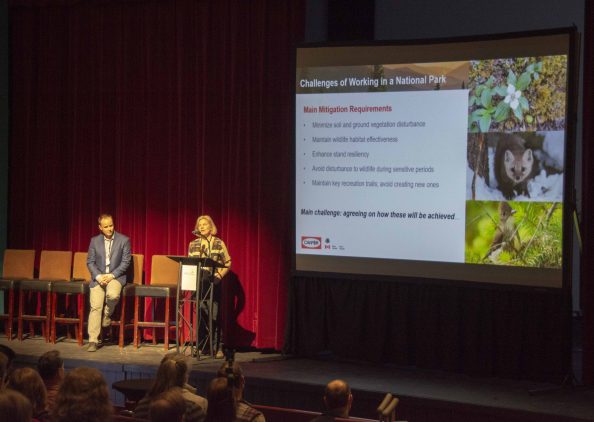 Dr. Kari Stuart-Smith (Canfor) and Landon Shepherd (Parks Canada) used a tag-team approach to highlight their unique partnership and forest management solution to Jasper’s Mountain Pine Beetle outbreak. The challenge was foreboding; meeting Park Canada’s mandate of maintaining ecosystems in as natural a state as possible while at the same time removing the severe fire risk around the city of Jasper. Equally challenging for Canfor was ensuring the logging component of the plan was economically viable given the minimal disturbance allowed to the park’s soils, wildlife and recreation trails. Although a work in progress, the partnership has broken new ground on how forest reliance can be maintained within Canada’s national parks.
Dr. Kari Stuart-Smith (Canfor) and Landon Shepherd (Parks Canada) used a tag-team approach to highlight their unique partnership and forest management solution to Jasper’s Mountain Pine Beetle outbreak. The challenge was foreboding; meeting Park Canada’s mandate of maintaining ecosystems in as natural a state as possible while at the same time removing the severe fire risk around the city of Jasper. Equally challenging for Canfor was ensuring the logging component of the plan was economically viable given the minimal disturbance allowed to the park’s soils, wildlife and recreation trails. Although a work in progress, the partnership has broken new ground on how forest reliance can be maintained within Canada’s national parks.
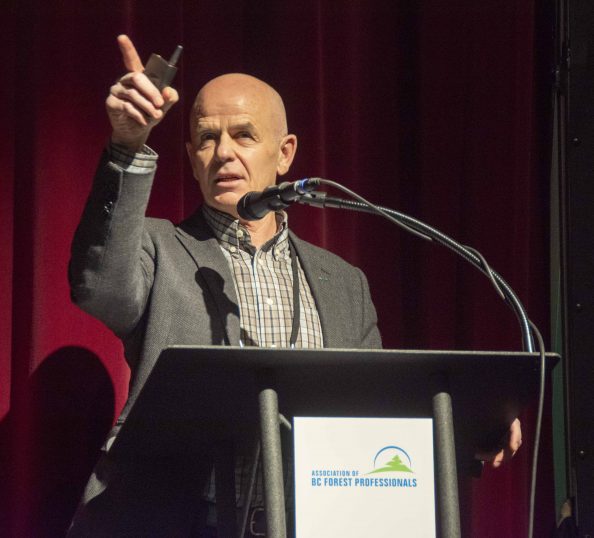 Quesnel Mayor, Bob Simpson rounded off the panel discussion with a real world example of what the lack of forest resilience means at the community level. Citing the city’s recent wildfire evacuation threat, Simpson spoke of the culpability of past forest management (e.g., managing for static/limited values) and the need for forest professionals to pursue a “new science” to address the “new normal”. Taking their future into their own hands, Quesnel is already protecting the community’s lands and assets; working with the Ministry of Forests to identify and create fire breaks in at-risk areas and moving to landscape-level planning in Mountain Pine Beetle devastated areas—to ensure future forest resilience and economic opportunity. “The key is to put the value lens aside, take action in bite-size pieces and be ambitious rather than risk-averse”, says Simpson.
Quesnel Mayor, Bob Simpson rounded off the panel discussion with a real world example of what the lack of forest resilience means at the community level. Citing the city’s recent wildfire evacuation threat, Simpson spoke of the culpability of past forest management (e.g., managing for static/limited values) and the need for forest professionals to pursue a “new science” to address the “new normal”. Taking their future into their own hands, Quesnel is already protecting the community’s lands and assets; working with the Ministry of Forests to identify and create fire breaks in at-risk areas and moving to landscape-level planning in Mountain Pine Beetle devastated areas—to ensure future forest resilience and economic opportunity. “The key is to put the value lens aside, take action in bite-size pieces and be ambitious rather than risk-averse”, says Simpson.